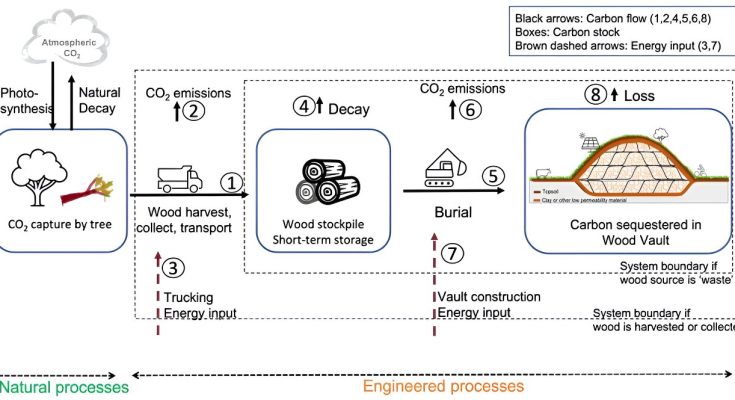A team of researchers with varied backgrounds at the University of Maryland, working with a colleague from Ministère de l’Agriculture, des Pêcheries et de l’Alimentation, in Canada, reports the viability of burying biomass as an inexpensive way to store climate-warming carbon.
In their study, published in the journal Science, the group analyzed a log naturally buried under a layer of clay for thousands of years. Yuan Yao has published a Perspective on the research in the same journal issue.
Carbon and other greenhouse gases in the atmosphere are causing the planet to grow warmer. To prevent likely catastrophic repercussions, humans need to stop emitting greenhouse gases, most particularly carbon dioxide, into the atmosphere.
However, scientists have also found that because so much carbon has already been released into the atmosphere, some must be removed to prevent further heating. To date, a number of ideas have been proposed regarding how to do so—most have proven to be costly. In this new study, the research team suggests a much less expensive alternative—burying biomass.
Prior research has suggested that burying biomass could be a way to sequester carbon. Most plants pull carbon out of the air and then release it when they die. If such plants were instead buried, the researchers suggest, the airborne carbon they absorbed would be held captive, preventing it from reaching the atmosphere.
The research team found a natural source of evidence for this idea, a log they uncovered while digging a trench in Canada. Dating showed it to be from approximately 3,775 years ago, and it was remarkably well preserved by the clay in which it was embedded. Testing showed that the log still held 95% of the carbon it had absorbed while still alive.
Noting that clay is abundant in soils around the world, the researchers calculated the cost of burying logs and other types of biomass as a way to sequester carbon. They found that doing so would cost just $30 to $100 per ton, as opposed to the $100 to $300 per ton it costs using other methods.
They further suggest that it should be possible to sequester up to 10 gigatons of carbon per year just by burying biomass.
More information: Ning Zeng et al, 3775-year-old wood burial supports “wood vaulting” as a durable carbon removal method, Science (2024). DOI: 10.1126/science.adm8133
Yuan Yao, A woody biomass burial, Science (2024). DOI: 10.1126/science.ads2592
Journal information: Science





